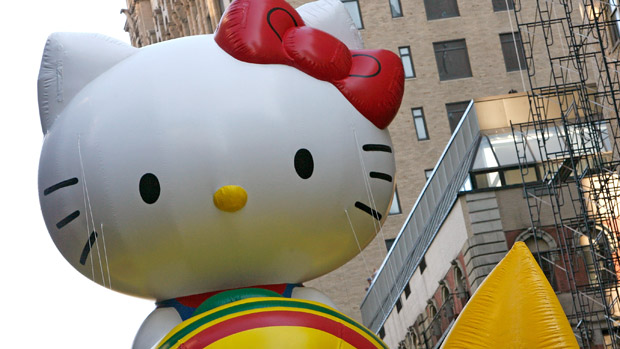Hello Kitty turns 40: how did she become so popular?
After four decades Hello Kitty is worth $7bn a year – but is she a cat or a schoolgirl?

In four decades, Hello Kitty has gone from a picture on a coin purse in Japan to a global marketing phenomenon said to be worth at least $7bn a year.
Produced by Japanese company Sanrio, the white bobtail cat has been etched onto almost every imaginable fashion accessory, from jewellery, bags and shoes to phones, laptops and contact lenses.
Hello Kitty turned 40 on Saturday, with the world's first Hello Kitty Convention taking place over the weekend. Tens of thousands of people flocked to the Geffen Contemporary at Los Angeles' Museum of Contemporary Art to celebrate the iconic character, prompting the question: just what is it that makes her so popular?
The Week
Escape your echo chamber. Get the facts behind the news, plus analysis from multiple perspectives.

Sign up for The Week's Free Newsletters
From our morning news briefing to a weekly Good News Newsletter, get the best of The Week delivered directly to your inbox.
From our morning news briefing to a weekly Good News Newsletter, get the best of The Week delivered directly to your inbox.
Who is Hello Kitty?
Kitty White, aka Hello Kitty, was "born in the suburbs of London" and "weighs three apples". Her favourite colour is red, she enjoys playing piano and baking cookies, and has a twin sister named Mimmy. Contrary to popular opinion, she is apparently not in fact a cat. Sanrio pointed out in August that she is never shown on all fours and she doesn't eat cat food. "Obviously she looks like a cat," admitted the company's spokesman. "Some people want to think of her and describe her as a cat. But we at Sanrio always reference her as a little girl." To make matters more confusing Hello Kitty has a pet called Charmmy Kitty, which Sanrio does reference as a cat.
How popular is Hello Kitty?
Originally aimed at preteen girls, many of Hello Kitty's fans are now adults. At this weekend's sell-out Hello Kitty Convention, 25,000 people descended on Los Angeles to listen to expert speakers, take part in workshops and even get themselves a Hello Kitty tattoo (Katy Perry is among those who have the cat-girl inked onto her skin). The iconic cartoon character can also be seen daubed across the side of Taiwan's Eva Airlines planes and is featured on everything from the airline's boarding cards and headrest covers to the crew uniforms. She features as the main character at two Japanese Sanrio theme parks and even flew into space aboard the small nanosatellite Hodoyoshi 3 in June this year.
A free daily email with the biggest news stories of the day – and the best features from TheWeek.com
Why is Hello Kitty so popular?
Branding expert Dorie Clark puts Hello Kitty's popularity down to her simple, mouthless design. "She's stoic, she's expressionless, and people can put onto her almost any kind of emotion," she tells Associated Press. "She can mean almost anything to anyone." After 40 years, there is also an element of nostalgia, as adults look back on her as a familiar reminder of their childhood, says Clark. Christine Yano, a visiting professor of Japanese Studies at Harvard, who has studied Hello Kitty for the past 16 years, also thinks it is the "very clever, aesthetically pleasing design", which enables people to read what they want into her face. Yano says the character is part of "kawaii", Japanese cute culture, which grew as girls became powerful consumers and a cultural force in the 1970s and 1980s. Kawaii can be taken at face value or it can play with the notion of female sweetness in an ironic or subversive manner, says Yano.
Does she have any critics?
Not everyone is a fan of Hello Kitty. In fact, some say it is her lack of mouth and saccharine character that has made her a polarising cult figure. One common criticism is that she promotes a stereotype of women as sweet-natured and silent. "The feminists' argument is a perception that women might be infantilised by this cute product that doesn't speak to their full powerful womanhood or their sexuality," Merry White, anthropology professor at Boston University, tells Time magazine. But others, including Hello Kitty's makers, insist her absent mouth is a mark of empowerment as it allows others to project their feelings onto her. Jill Koch, senior vice president of brand management and marketing at Sanrio, says: "She is so empowering because she can be anything you want her to be."


